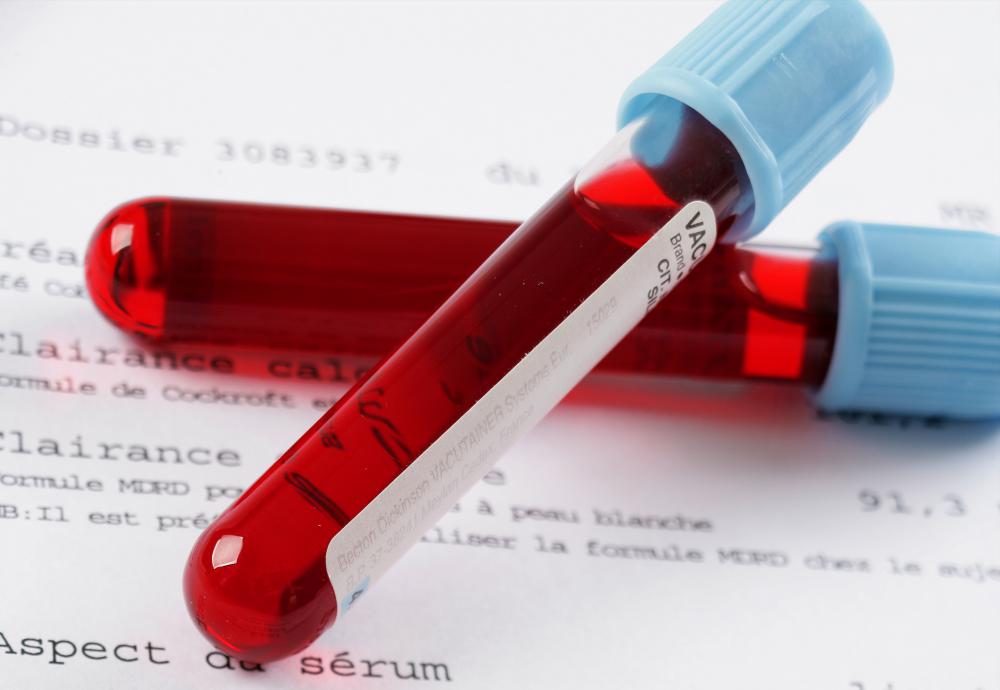At WiseGEEK, we're committed to delivering accurate, trustworthy information. Our expert-authored content is rigorously fact-checked and sourced from credible authorities. Discover how we uphold the highest standards in providing you with reliable knowledge.
What is a Paternity Test?
Determining the biological father of a child can have a major impact on child custody, divorce and insurance claim cases. It can also provide answers for those who have been adopted or spent time in the child welfare system. The means of determining a child's biological father, or possibly of excluding other candidates, is called a paternity test.
Before the advent of DNA testing, a paternity test usually excluded candidates rather than identifying them. Blood samples were drawn from the child and suspected fathers. Through simple ABO crosstyping, a potential father could be eliminated quickly.

If the child's blood contained a B component and the potential father was strictly A, the paternity test would exclude him as a parent. This did not mean, however, that another candidate with blood type B was necessarily the father. A better paternity test was needed to include specific markers for a child's biological parent.
With advances in DNA testing came a much more accurate paternity test, one that stands up in a court of law and positively includes or excludes a candidate. A DNA paternity test can be ordered by a court, compelling the mother, child and potential fathers to donate epithelial cells for testing and comparison. These cells are typically harvested by swabbing the inside of the donors' cheeks and sending these samples directly to a laboratory. These epithelial cells contain all of the DNA sequences necessary to confirm paternity and maternity.

When the DNA laboratory performs a paternity test, all of the swabs are transferred to a special gel which uses electricity to separate the DNA strands. While it is possible to determine maternity as well as paternity, the identity of the biological mother is rarely called into question at this stage. Once the strands have been stained for clarity, a careful comparison is made between the child's and potential father's results.

A child should have certain DNA strands in common with its mother, and an additional set in common with the father. Comparing the mother's DNA with the child's strands should establish maternity with little question. It's the comparison with the paternal candidate's DNA that is the determining factor. The strands must match in at least three places in order to be considered a positive result. Some advanced DNA paternity test procedures can break down the samples to 20 or more strands, making the results even more accurate.
Exclusion as a father after a DNA paternity test is virtually 100% accurate, since the markers clearly do not match those of the child. In the case of a positive result, the DNA paternity test is usually considered 99% accurate or better, depending on the number of strands tested and compared. For legal purposes, the results are accurate enough to declare a candidate the biological father. Other issues such as child custody or insurance claims can then be addressed with the knowledge that the real biological father was indeed in court.
A paternity test can now be ordered directly from certified laboratories and performed in the privacy of the home. A swab provided by the testing company is provided to the child, mother and potential father. Some testing companies don't even require the participation of the mother, since maternity is rarely an issue. Once the samples have been collected, the swabs are sent directly to a laboratory and the results are documented several days later. These results are generally as accurate as a court-ordered paternity test, although additional testing under more controlled circumstances may be required for legal purposes.
AS FEATURED ON:
AS FEATURED ON:













Discuss this Article
Post your comments